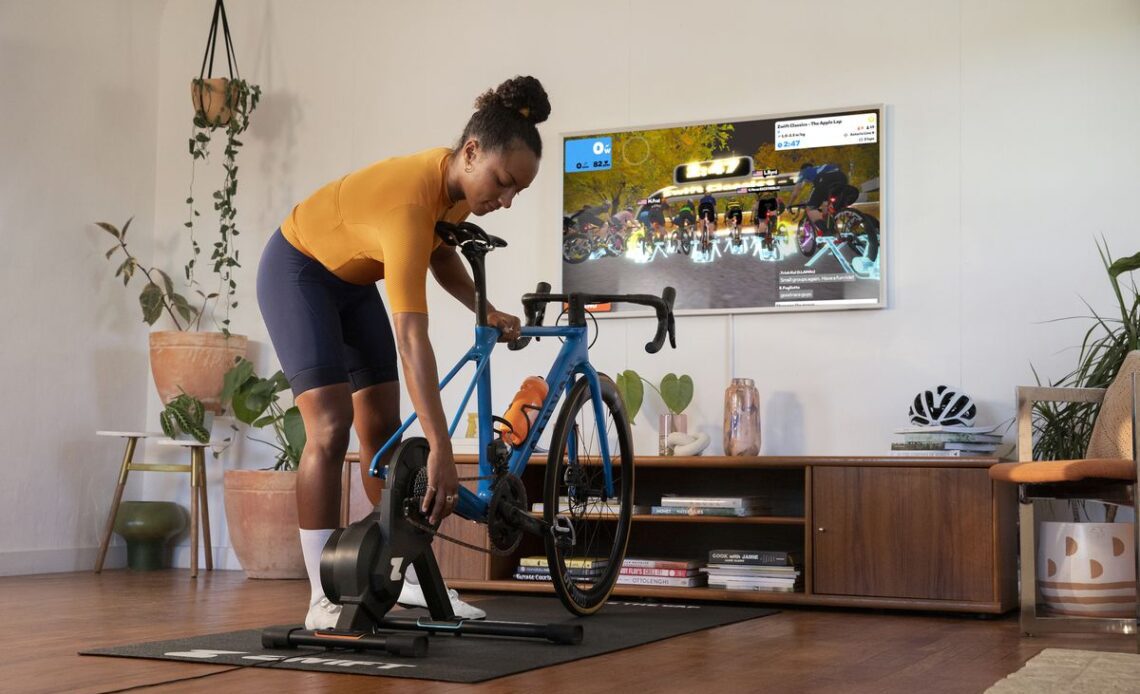Indoor training has come a long way in recent years. Rollers and some form of timing device turned into basic turbo trainers, and now there are tonnes of advanced options on the market. Advanced doesn’t mean complicated though, quite the opposite in fact. Although initial setup may seem extremely daunting to the uninitiated, brands such as Zwift have come up with plenty of helpful details to make the process simple and easy to follow. And remember, once setup is carried out, it’s normally just a case of putting your bike on the trainer, connecting everything up and starting to pedal.
There are a number of ways you can train effectively indoors. The best is a smart trainer with inbuilt power, but other choices include a basic, non-smart trainer with a separate power meter, and a basic trainer with speed and cadence sensors linked. Apps are also extensive, and can be run through a phone, tablet, computer or via Apple TV so there are plenty of ways to get going.
A few things to consider when choosing a setup include the type of trainer, compatibility and accessories required. Here we run through many of the considerations when setting up for indoor training, and will hopefully alleviate any concerns about complexity.
Bike compatibility
Most turbo trainers are compatible with the majority of bikes: road, hybrid, gravel, mountain and TT. What determines compatibility is, in most cases, the wheel size, cassette and axle, and with modern trainers such as the Zwift Hub, adapters are included. If you’re unsure, it’s worth checking out the full compatibility list on the trainer website, but in general there’s no need to worry as standard bikes generally work.
Wheel-on or direct drive. Basic or smart?
Turbo trainers, rollers and indoor bikes are all common choices, although turbo trainers are most popular with those who already own a bike of some kind and are looking to pair with a training app like Zwift.
Wheel-on or direct drive (where the rear wheel is removed and the cassette is attached to the trainer) are available. Wheel-on types are simple to setup and a non-smart model is useful if you plan on using it to warm up at races, although a set of rollers tends to be a better choice for this. They are a great budget option, but there are a few drawbacks such as lower maximum watts and reduced accuracy in readings.
Direct drive models are becoming more affordable and more popular. The ride feel is more realistic and smart models are…
Click Here to Read the Full Original Article at CyclingNews RSS Feed…

